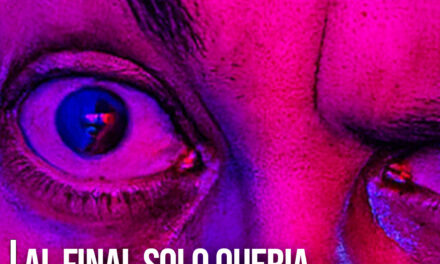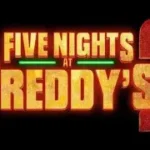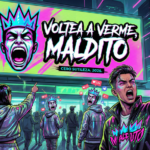
NICE VIOLENCE, HARD DRUGS, AND #SSC = SEXY SWINE SEX.
Throw in a couple of lesbian rapes and satanic rituals in the middle of the municipal cornfield, and you’ve got yourself an orgiastic ride through the Mexa interpretation of a punk universe—straight up what we could call the Mexican Mad Max. A gem—no, scratch that—a massive, juicy, delicious gem of what some posers are now calling «Mexican cursed cinema», or even worse, the term «psychotronic cinema» #getouttaherewiththatbullshit. But whatever.
Directed by Francisco Guerrero, an Argentinian dude who apparently loved Australian-style films full of high-speed ultraviolence. Too bad Mexico’s budgets were on the chicharrón taco from the street market level—because if he’d had the time and the money, this film WOULD HAVE been something truly legendary. This guy squeezed blood from a stone, and if you watch this movie with an eye for what could have been rather than just what it ended up being, you’ll see exactly what I mean.



When evaluating the quality of this director, don’t let yourself be swayed by Mexa snobbery—the kind where Jorge Ayala Blanco (one of the main reasons why cinema in Mexico never became a real industry, a real business, or a profession you could actually make a living from) dismisses or downplays him.
Keep in mind that this man cranked out an impressive 19+ films. For all of us who studied film hoping to impress girls and look mysterious at parties, that number is downright admirable. I don’t even want to imagine the pussy magnet powers this director must have had on those pool party nights, sipping Presidente Brandy from highball glasses.
THE PLOT, What’s it about?
The story revolves around the apocalyptic mayhem unleashed by a horde of so-called punk biker warlords who dominate the highway linking a couple of small towns on the way to Valle de Bravo (though, in reality, it’s heading towards Ixtapan de la Sal, in Tenango del Valle).
These punk fuckers, much like Anáhuac kids when they run out of Bacardi Blanco, spread terror and chaos among the simple-minded locals. We also see how, after the capture of the gang’s macho patriarchal leader, his alpha female (not my words—she literally calls herself that multiple times) moves heaven, hell, and even flexes her satanic powers in a bizarre cornfield ritual to rescue him from the corrupt authorities.
And that’s basically it—there’s no deeper plot. Apart from the satanic ritual and a few half-baked attempts at social commentary, this film is more of a performance piece depicting an orgy of destruction before the end of the world. (Watch it, and you’ll see I’m right.)

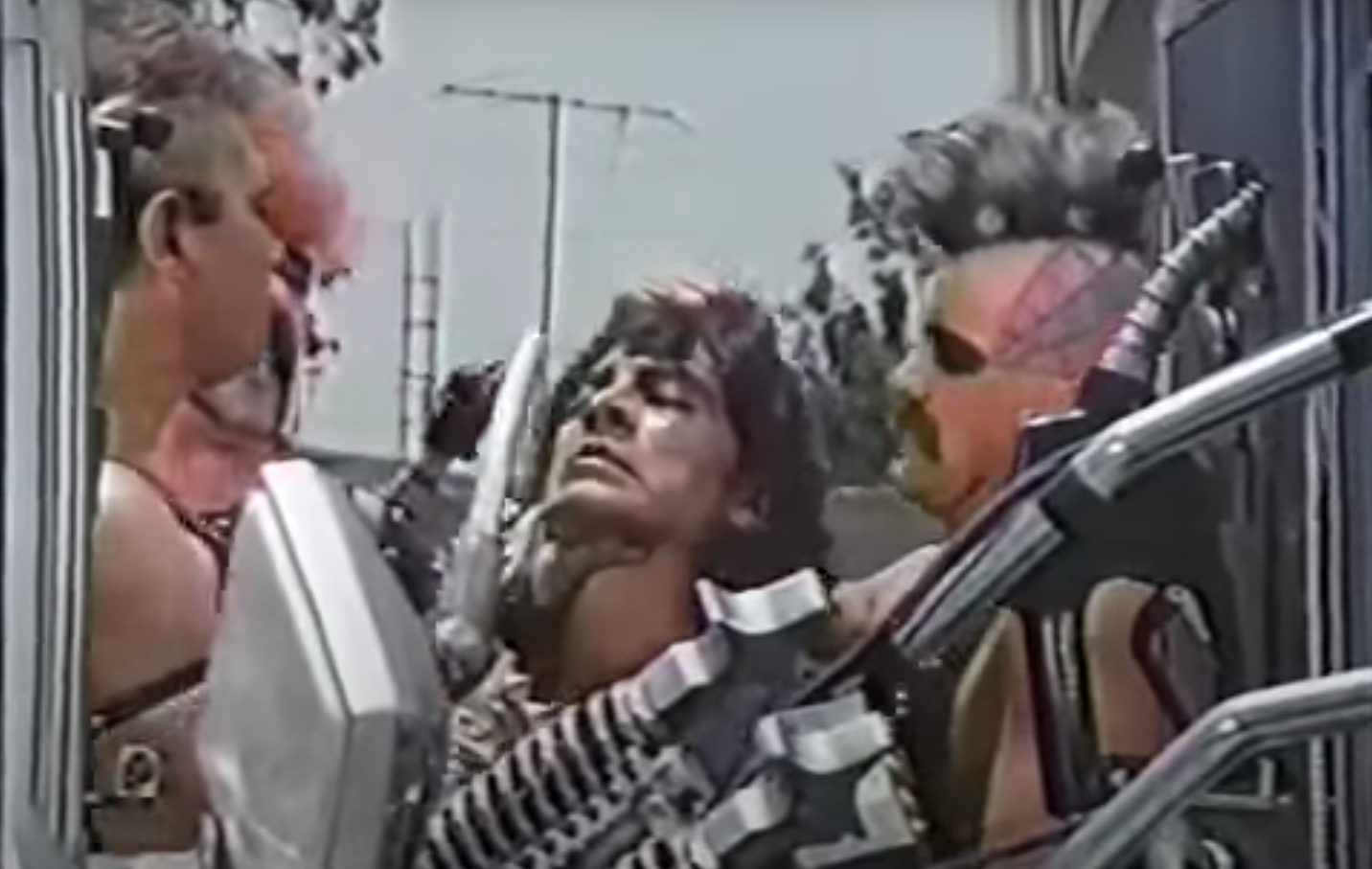
Protagonists of Overwhelming Sensuality
The leaders of the gang—who, just like the should-have-been father and mother of our national identity—are a luchador and a vedette:
- El Fantasma (Tarzán) – One of the most famous wrestlers in Mexa pancracio, a guy we definitely need to talk about at some point.
- La Princesa Lea (La Fiera) – Who, honestly, I could’ve sworn was Wanda Seux, one of the undisputed queens of vedette and later fichera cinema—a forgotten treasure of Mexican film history. (Wanda, not Princesa Lea—though, to be fair, she’s quite the character too.)

This Diva and Virginal Seed of Proto-Feminist Empowerment
This diva—this virginal seed of the empowered proto-feminism that, decades later, our AMLOver government chose to ignore—is a Canadian actress who started her career the right way: at El Blanquita, under the patronage of the manliest of men, the ultimate Mexican charro, VICENTE “SILK HANDS” FERNÁNDEZ.
She put on a comic-magic-musical show, where she would bathe naked in a giant champagne glass—which, let’s be real, is the height of elegance in a country where pulque was once considered a luxury. She swayed her profane and sinful-looking olives with a hypnotic grace.
A woman who, over the years, captivated the hearts of an entire generation of men, who dreamed of her and immortalized her on the walls of their workshops, butcher shops, poultry markets—and I’ve even spotted her in the confessionals of a few churches, because hey, dreaming is allowed.
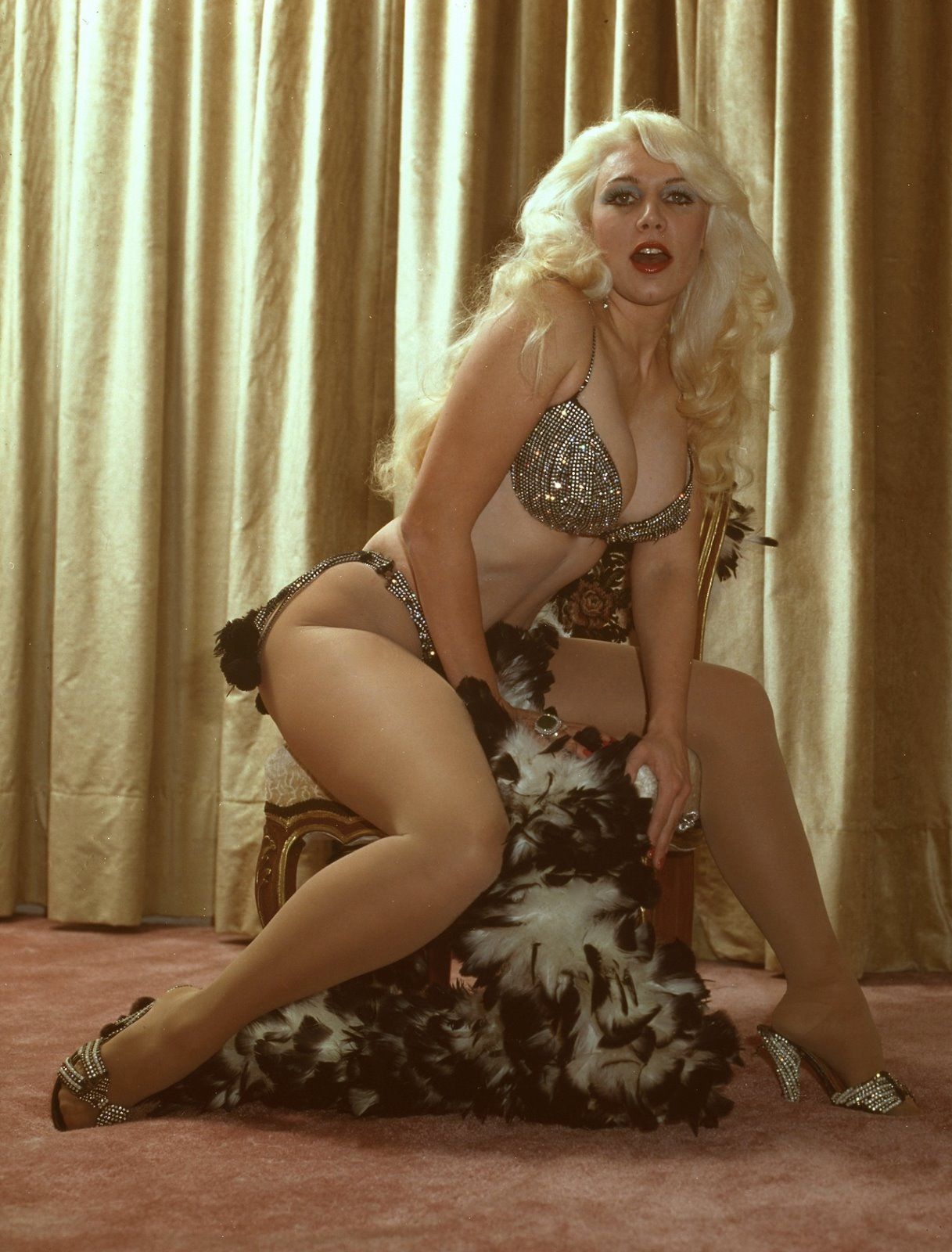

In the Words of a Fearless Punk
One of the most fearless and iconic punks, or at the very least, the one with the best damn haircut, Tito Guillén, said in an interview for Milenio:
*»These were, honestly, really good movies—wild, violent, and fun, no matter what people say. We were a gang of full-blown Mexican punks. There were about 10 of us with actual characters in this massive gang that rode motorcycles and motorized tricycles rigged with Volkswagen engines. The film’s director, Paco Guerrero, gave us total creative freedom to invent our own characters. They threw us into a specific aesthetic, and everyone came out transformed. I think we were punks with a lot of what would later become emo vibes, with a touch of goth.
When we arrived to film in Tenango del Aire, the whole town freaked out at how we looked. Then, when the trucks and cameras showed up, they got the picture and chilled out. We were a gang of Mexican punks working with the resources available at the time—including booze during the night shoots, ‘cause man, it was freezing as hell.»*
The Music—Not Punk, But Still Freaking Awesome
When it comes to the music, this film packs a raw and gritty soundtrack with a story to match. It features a banger by Three Souls in My Mind, led by Charlie Haupvoguel, one of the true pioneers of Mexican rock.
Don’t get it twisted—by this point, Alex “chale, qué onda con mi hija” Lora was already out of the band. He either left at the right time or just in time, depending on how you see it.
But for the sake of Mexican rock history, let’s set the record straight: Charlie is an idol, a legend for those who actually know their music. However, since you’re probably just some millennial simpleton, chances are you have no damn clue who he is.
Encore
But hold your horses, ‘cause there’s more—if you enjoyed this first part, you can’t miss the sequel. This time, in a full-blown revenge flick, the hero cop from the first film goes full vigilante mode, beating the living crap out of these fearless EcatePunks, one by one, with nothing but his fists and a baton—just like Bronson in Death Wish.
And yeah, we’ll eventually write about that movie too… if the drugs and the existential abyss don’t take us out first.
Credits
- Director: Francisco Guerrero
- Producer: Ernesto Fuentes
- Cinematography: Alfredo Uribe
- Music: Three Souls In My Mind
- Editing: Jorge Peña
Cast:
Juan Valentín, Juan Gallardo, Ana Luisa Peluffo, El Fantasma, Princesa Lea, Martha Elena Cervantes, Alfredo Gutiérrez, Guillermo Lagunes, Olga Ríos, Laura Tovar, Andrea Aguirre, Rosita Bouchot, Ricardo Obregón, Ramón Blanco, Enrique Bermúdez
- Country: Mexico
- Year: 1980
- Runtime: 88 min
Interview lovingly borrowed from:
🔗 Milenio – Memorias de un Intrépido Punk


